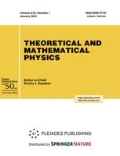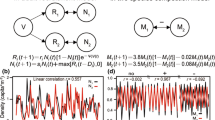Abstract
In a broad sense, any parametric family of quantum states can be viewed as a quantum clock. The time, which is the parameter, is encoded in the corresponding quantum states. The quality of such a clock depends on how precisely we can distinguish the states or, equivalently, estimate the parameter. In view of the quantum Cramér—Rao inequalities, the quality of quantum clocks can be characterized by the quantum Fisher information. We address the issue of quantum clock synchronization in terms of quantum Fisher information and demonstrate its fundamental difference from the classical paradigm. The key point is the superadditivity of Fisher information, which always holds in the classical case but can be violated in quantum mechanics. The violation can occur for both pure and mixed states. Nevertheless, we establish the superadditivity of quantum Fisher information for any classical-quantum state. We also demonstrate an alternative form of superadditivity and propose a weak form of superadditivity. The violation of superadditivity can be exploited to enhance quantum clock synchronization.
Similar content being viewed by others
References
D. Janzing and T. Beth, IEEE Trans. Inform. Theory, 49, 230–240 (2003); arXiv:quant-ph/0112138v2 (2001).
R. A. Fisher, Proc. Cambridge Philos. Soc, 22, 700–725 (1925).
C. R. Rao, Bull. Calcutta Math. Soc, 37, 81–91 (1945).
H. Cramér, Mathematical Methods of Statistics (Princeton Math. Ser., Vol. 9), Princeton Univ. Press, Princeton, N. J. (1946).
T. M. Cover and J. A. Thomas, Elements of Information Theory, Wiley, New York (1991).
P. J. Huber, Robust Statistics, Wiley, New York (1981).
E. A. Carlen, J. Funct. Anal, 101, 194–211 (1991).
A. Kagan and Z. Landsman, Statist. Probab. Lett., 32, 175–179 (1997).
C. W. Helstrom, Quantum Detection and Estimation Theory, Acad. Press, New York (1976).
A. S. Holevo, Probabilistic and Statistical Aspects of Quantum Theory [in Russian], Nauka, Moscow (1980); English transi. (North-Holland Ser. Statist. Probab., Vol. 1), North-Holland, Amsterdam (1982).
S. L. Braunstein and C M. Caves, Phys. Rev. Lett., 72, 3439–3443 (1994).
D. Petz, Linear Algebra Appl, 244, 81–96 (1996).
E. P. Wigner and M. M. Yanase, Proc. Natl. Acad. Sci. USA, 49, 910–918 (1963).
P. Gibilisco and T. Isola, J. Math. Phys., 44, 3752–3762 (2003); arXiv:math/0304170v1 (2003).
S. Luo, Proc. Amer. Math. Soc, 132, 885–890 (2004).
S. Luo and Q. Zhang, Phys. Rev. A, 69, 032106 (2004).
S. Luo and Q. Zhang, IEEE Trans. Inform. Theory, 50, 1778–1782 (2004); 51, 4432 (2005).
P. Chen and S. Luo, Front. Math. China, 2, 359–381 (2007).
F. Hansen, Proc. Natl. Acad. Sci. USA, 105, 9909–9916 (2008); arXiv:math-ph/0607049v6 (2006).
L. Cai, N. Li, and S. Luo, J. Phys. A, 41, 135301 (2008).
E. H. Lieb, Adv. Math., 11, 267–288 (1973).
E. H. Lieb and M. B. Ruskai, Phys. Rev. Lett., 30, 434–436 (1973).
A. Uhlmann, Comm. Math. Phys., 54, 21–32 (1977).
H. Kosaki, Comm. Math. Phys., 87, 315–329 (1982).
M. A. Nielsen and I. L. Chuang, Quantum Computation and Quantum Information, Cambridge Univ. Press, Cambridge (2000).
F. Hansen, J. Stat. Phys., 126, 643–648 (2007); arXiv:math-ph/0609019v2 (2006).
S. Luo, J. Stat. Phys., 128, 1177–1188 (2007).
Author information
Authors and Affiliations
Corresponding author
Additional information
Prepared from an English manuscript submitted by the authors; for the Russian version, see Teoreticheskaya i Matematicheskaya Fizika, Vol. 165, No. 2, pp. 370–384, November, 2010.
Rights and permissions
About this article
Cite this article
Chen, P., Luo, S. Clocks and fisher information. Theor Math Phys 165, 1552–1564 (2010). https://doi.org/10.1007/s11232-010-0129-9
Received:
Revised:
Published:
Issue Date:
DOI: https://doi.org/10.1007/s11232-010-0129-9




